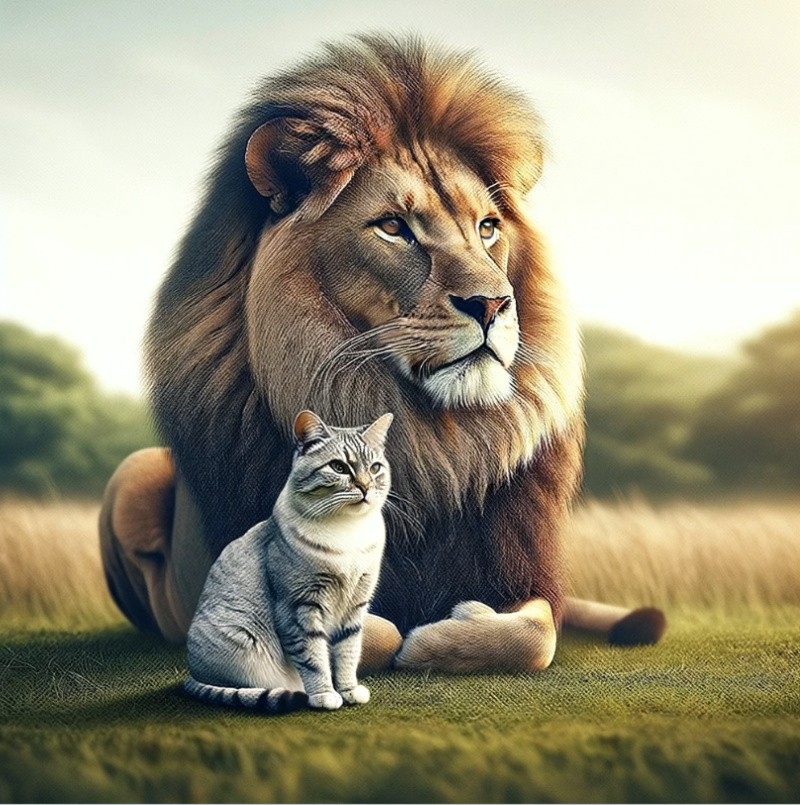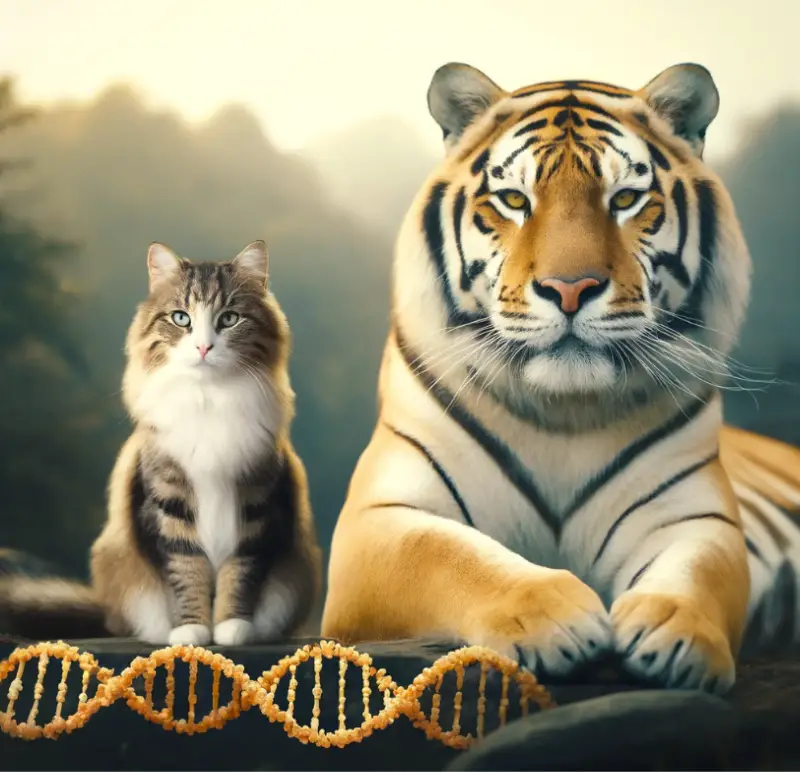
Just how domesticated are our indoor feline friends? Animal behaviorists continue to study the relationship between humans and cats and to gauge their level of domestication. Cats are unapologetic. You can pick up and enthusiastically love your cat, and it may respond with only a few unhurried blinks. Best said in the following quote:
“The cat does not offer services,” William Burroughs once wrote. “The cat offers itself.”
Are cats domesticated? This is a question frequently asked. Let’s see what the latest research shows.

Dogs are very dependent on us to the point of being servile, but cats have their own unique independence that keeps us wondering about their role in domestic life.
A cat will sit and meow at his food bowl in the morning, demanding to be fed. He will set off on a multiple-day hike in the afternoon leaving you wondering where he is. However, if you want to work, the cat will likely commandeer your lap, keyboard, and attention. He or she will purr and look at you with condescending eyes. How familiar is this scene?

Scientists have been asking that same question. The latest answers based on insight from archeological discovery and genome-sequencing studies, state that cats are semi-domesticated. Ancient Egyptians were the first people to bond with the cat, and this was only four thousand years ago.
In 2004, a team of French researchers working in Cyprus unearthed the 9,500-year-old remains of a human and a cat buried side by side. The analysis of the cat bones and teeth from a 350-year-old settlement in China indicated that cats were eating rodents, grains, and leftovers from human meals. It appears that wildcats in the Near East and Asia likely began to congregate near farms and granaries where mice and rat were abundant. People tolerated the furry exterminators, and wildcats became increasingly comfortable around people.
Whether or not cats began to “like” humans five or ten millennia ago, evidence strongly suggests that cats have not been a part of the domestic domain for as long as dogs. Dogs have been our companions for over 40,000 years.

Is the cat another opportunistic animal that evolved to take advantage of civilization? Or really are they a larger version of the rodents it catches? Somewhere along the line people began to welcome cats and began to provide them with food and a warm place to sleep? The question is why?
Perhaps its’ the cat’s innate predisposition to tameness and its charm.
Dogs likely initiated their own domestication by prowling around campfires in search of food. Our ancestors harnessed dogs to useful tasks, breeding them to guard, hunt, and herd. However, humans back then never asked much of roaming cats and we have been slow to diversify cat breeds. Dog, horse, and cattle breeds are more than 500 years old, but the first documented cat fanciers’ show did not take place until 1871 at the Crystal Palace in London. Believe it or not, most modern cat breeds emerged within the past fifty years.

“This relatively short and lenient period of selective breeding is manifest in the cat genome,” Wesley Warren, a geneticist at Washington University in St. Louis said. In a study published in 2014, Warren and his colleagues analyzed DNA from several wildcats and breeds of domestic cats including an Abyssinian named Cinnamon. They confirmed that genetically cats have diverged much less from their wildcat ancestors than dogs have form wolves.
The cat genome has much more modest signatures of artificial selection. Cats retain their hunting skills and abandoned felines are more likely to survive without human intervention. There are feral cats in some countries who routinely breed with their wildcat cousins. “There’s still a lot of genetic mixing,” Warren said. “You don’t have the true differential you see between a wolf and a dog. Using the dog as the best comparison, the modern cat is not what I would call fully domesticated.”

Researchers do not agree. “I don’t think it makes sense to talk about animals as semi-or fully domesticated,” Greger Larson, a paleogeneticist and archeologist at Oxford University and an expert on domesticating, said. “Any threshold you try to define will necessarily be arbitrary.” Larson agrees with the views of Melinda Zeder, an archeologist at the Smithsonian Institution. She has written on the domestication of both plants and animals. Zeder believes domestication is an ongoing symbiosis between humans and another species – “a sort of pact that ends up being mutually beneficial,” she said. This relationships between humans and animals can follow many paths and result in different outcomes.
There are times when people gradually domesticate a prey species or deliberately remove non-prey animals from the wild and breed them for a specific purpose just like humans have done with horses. There are other cases where hunger draws a wild animal like a dog, chicken, guinea pig, or cat to human society and the animal becomes increasingly tolerant of people.

Zeder says, “Cats are domesticated. But I think what confuses people about cats is that they still carry some of the more aloof behaviors of their solitary wild progenitors. Sometimes they don’t give a damn about you, but they are very much a part of your niche.”
She continues to say “Cats have us do everything for them. We clean their litter, stroke them, admire them, but unlike dogs they do not have to constantly please and satisfy our needs. They are probably the ultimate domesticate.”

Growing up in California, the author had a tuxedo cat named Jasmine. When called, Jasmine would stop in place and stare for a few minutes. She would then trot over. It was her need to preserve the pretense that this greeting was entirely her idea. Jasmine was incredibly affectionate when she needed to be, she Jasmine spent most of her time in solitude. Like so many of her ilk, Jasmine loved to perch herself on or near a windowsill and survey the outdoors for hours. That behavior is quintessentially feline. A docile carnivore balance on the border of a human home, alone and content, yet with all its senses tuned to the outside world.
Are cats truly domesticated? We think so. Certainly well enough to greatly enhance the lives of cat lovers worldwide. That bit of wild gives them their unique character and independence.



